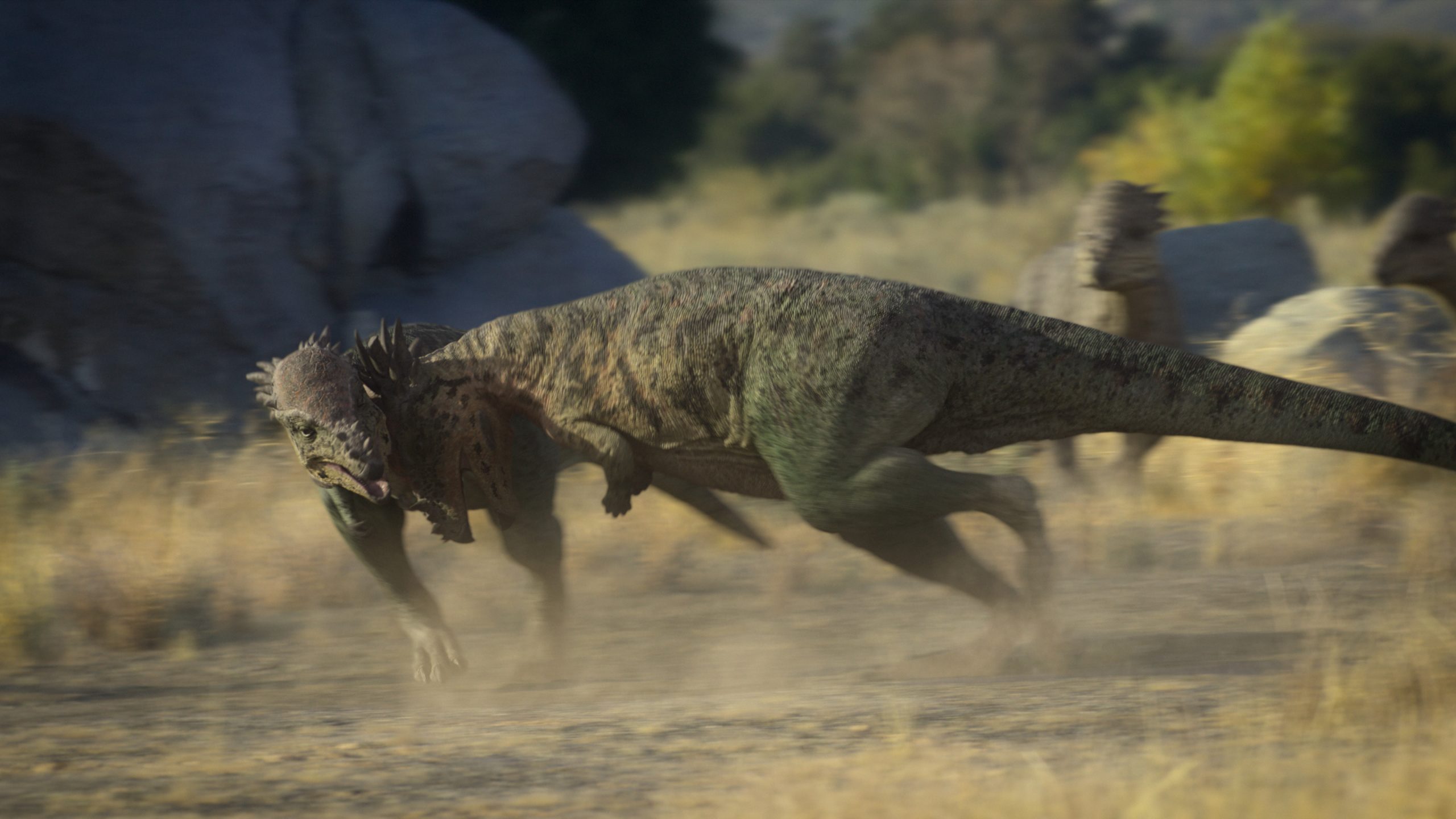After exploring the badlands of the Mesozoic world, Prehistoric Planet 2 takes viewers to the “Swamps.”
“Swamps” opens in eastern Asia, where a young azhdarchid pterosaur takes flight. Azhdarchids are decently known due to the popularity of Quetzalcoatlus, even though their numerous fragmentary remains aren’t complete enough to be assigned to a species. Such is the case in the Djadokhta formation of Mongolia, where an azhdarchid bone was found in the fossilized stomach cavity of a Velociraptor, something that served as inspiration for the opening scene of “Freshwater” from the original Prehistoric Planet.
The crocodilian attacking the hatchlings is Shamosuchus djadochtaensis, and while it more closely resembles modern day crocodilians than Simosuchus, it’s actually a member of the family Paralligatoridae, a group of suchians that exists just outside of the clade Eusuchia, which contains all modern-day crocodilians.

“Swamps” then takes viewers to the rich undergrowth of a forest in South America, where Austroraptor cabazai hunts for fish. Described in 2008 by Fernando Emilio Novas et al from Argentinian fossils, Austroraptor is a dromaeosaur like Velociraptor and Deinonychus, but from a different branch in that group. These animals are known as unenlagiines, after Unenlagia comahuensis, and represent dromaeosaurs that are seemingly adapted for catching fish, with long, tapered snouts and shorter toe claws and forearms.
These traits gave unenlagiines a superficial resemblance to the spinosaurid dinosaurs that had been found in the watery environments of earlier Cretaceous ecosystems, but had seemingly gone extinct by the time of the Maastrichtian age. Some unenlagiines were small, like fellow Argentinian Buitreraptor gonzalezorum. Austroraptor was a comparative giant, with size estimates putting it at nearly 5 meters long.
Prehistoric Planet 2 works as a true sequel series by returning to the animals of the first season and providing new information, and no scene captures this as strongly as the return of Beelzebufo, following a cameo in “Freshwater.” While that episode saw the large frog devour an infant Masiakasaurus, this episode focuses on one trying to find a mate. The scene of Beelzebufo vocalizing in shallow water is reminiscent of modern African bullfrogs, which aggressively defend their mating grounds from all challengers.

Annoying the Beelzebufo is a herd of titanosaurs; in this case, Rapteosaurus krausei. Described in 2001 by Kristina Rogers and Catherine Forster, the much more complete skeleton of Rapetosaurus provided great insight into our knowledge of titanosaurs, which had previously been known primarily from fragmentary remains. Attentive viewers will notice large bumps along the back of the Rapetosaurus, called osteoderms, which are bits of bone embedded in the skin, serving as a type of armor. Osteoderms have been found associated with titanosaurs across the world, and help provide a better understanding of how these large animals defended themselves from potential predators.
Between “Freshwater,” “Islands,” and now “Swamps,” the Prehistoric Planet team has done a fantastic job bringing to life the ecosystem of the Maevarano formation of northern Madagascar. Due to various biases, most dinosaur media focuses on animals from the northern hemisphere (and North America more specifically), so it’s exciting to see a less famous ecosystem get so much attention.
Not to be completely outdone, though, the animals of North America close out “Swamps.” The first vignette focuses on Pachycephalosaurus, the most famous of the dome-skulled dinosaurs. Larger than the Prenocephale of “Badlands,” these animals have a lot of mysteries surrounding them. The “Prehistoric Planet: Uncovered” segment at the end of “Swamps” does a great job recounting the journey in our understanding of the head-butting behavior in these animals, but the episode also touches on another subject of pachycephalosaur behavior. What were these animals eating?

Figuring out what any animal eats can typically be resolved by looking at their teeth. Lengthy, pointed teeth with serrations? That’s a carnivore. Smaller, thicker teeth? An herbivore having to crush tough fibrous plants. But new finds show that Pachycephalosaurus had sharp, serrated teeth at the front of its mouth and flatter teeth towards the back, suggesting the animals may have been more omnivorous that previously assumed. That more generalist diet is reflected on-screen as a Pachycephalosaurus devours a few insects.
“Swamps” closes out with the iconic Tyrannosaurus rex. Though Prehistoric Planet previously subverted expectations by showing the tyrant lizard king as an attentive father, “Swamps” doesn’t shy away from showing the animal actively hunting. Nevertheless, rather than showing T. rex as a bellowing monster with footsteps that signal its arrival, Prehistoric Planet 2 emphasizes the stealthiness such a large animal can have. Modern encounters with elephants wandering through hotels can give the unsettling realization that big animals can be terrifyingly quiet, and tyrannosaurid footprints show that not only did they have fleshy feet making them efficient walkers, but some tyrannosaurs may have traveled in groups.
While dinosaurs ruled the land and pterosaurs ruled the sky, the next episode of Prehistoric Planet 2 explores the denizens of the ancient seas. Join us here tomorrow for coverage of the series’ penultimate episode, “Oceans.”
AIPT Science is co-presented by AIPT and the New York City Skeptics.
Join the AIPT Patreon
Want to take our relationship to the next level? Become a patron today to gain access to exclusive perks, such as:
- ❌ Remove all ads on the website
- 💬 Join our Discord community, where we chat about the latest news and releases from everything we cover on AIPT
- 📗 Access to our monthly book club
- 📦 Get a physical trade paperback shipped to you every month
- 💥 And more!














You must be logged in to post a comment.